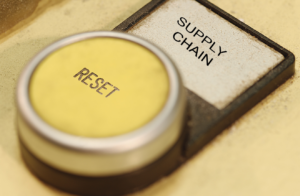 Long before the pandemic forced shoppers online, the trend was clear: Consumers were increasingly taking the digital path to purchase. According to Tom Standage (@tomstandage), editor of The Economist‘s ‘The World in 2021‘,
Long before the pandemic forced shoppers online, the trend was clear: Consumers were increasingly taking the digital path to purchase. According to Tom Standage (@tomstandage), editor of The Economist‘s ‘The World in 2021‘,
Long before the pandemic forced shoppers online, the trend was clear: Consumers were increasingly taking the digital path to purchase. According to Tom Standage (@tomstandage), editor of The Economist‘s ‘The World in 2021‘, “The adoption of new technological behaviors in response to the pandemic, from video-conferencing to online shopping, means usage has already reached levels that were not expected for many more years.”[1] He adds, “Grannies have discovered online shopping.” The implication is clear — there is no turning back the clock, the future is here. Ali Amarsy, Senior Vice President of Global Product Strategy at Publicis Commerce, writes, “COVID-19 has catapulted us into the future. In 2020, global e-commerce sales growth jumped three years in the first three months of stay-at-home mandates, with a share of overall retail matching 2023 predictions. … Huge shifts in consumer behavior have left many businesses, often working in outdated systems and processes, faced with new challenges as they try to capture increased demand.”[2]
Tech-celeration and the digital path to purchase
Looking at this past year, Standage writes, “Call it tech-celeration. … The pandemic has accelerated existing trends of technological adoption. Shopping was steadily moving online; payments were slowly going digital; online learning was slowly becoming more prevalent; more people were working from home, at least some of the time. Now people in many countries have been abruptly propelled into a future where all of these behaviors are far more widespread.” In the retail sector, journalist Lisa Lacy (@lisalacy) bluntly states, “[In 2020,] the most prominent trend is — without a doubt — explosive growth in digital commerce. Media company GroupM’s first-ever ecommerce forecast noted a ‘new plateau for newly accelerated future growth.’ Jeff Malmad, executive director and lead at Shop+, a unit focused on retail and ecommerce at media agency Mindshare, pointed to internal research that found 62% of Gen X and 44% of Boomers are shopping online more now than before the pandemic.”[3] And a lot of those Boomers are grandmothers.
Stefan Larsson, CEO and a member of the Board of Directors of PVH Corp, told the Wall Street Journal (WSJ), “Consumers won’t go back to shopping the way they did before the pandemic. They will go forward into the new normal.”[4] WSJ journalist Harriet Torry (@HarrietTorry) writes, “The pandemic’s disruptions have transformed how American consumers behave by accelerating their embrace of digital commerce, and the changes are likely to prove permanent, according to businesses studying and adapting to the changes. A recent survey by consulting firm McKinsey & Co. found that about three out of four people have tried a new shopping method due to the coronavirus and that more than half of all consumers intend to continue using curbside pickup and grocery-delivery services after the pandemic is over. Nearly 70% of consumers surveyed intend to continue buying online for store pickup. The pandemic collapsed into three months a process of adopting e-commerce that otherwise would have taken 10 years in the U.S., the firm concluded.”[5]
eCommerce and omnichannel operations
Lacy notes, “Another 2020 trend was retailers pivoting to omnichannel retail.” Matt Moorut (@MattMoorut), principal analyst at research firm Gartner, told Lacy, “A lot of brands and a lot of retailers turned some of the local stores they had into mini distribution centers [in 2020], which puts them in a better position for 2021 than they were going to be otherwise. From the retail perspective, the functionality to actually be able to deliver this … wasn’t necessarily in the roadmap coming in.” One of the options physical retailers were offering before the pandemic — Buy-Online-Pickup-In-Store (BOPIS) — quickly morphed into Buy-Online-Pickup-Curbside. For grocers, this option had particular consumer appeal; and, when physical stores were allowed to open, it became a popular option for them as well. Older people, many of whom were tech-challenged before the pandemic, discovered they weren’t as behind the times as they thought. Allan Schilter, an 81-year-old retired accountant in Springfield, MO, told Torry, “I will never go to a grocery store again in my life because it’s just so convenient and easy [to shop online].” According to Torry, “Mr. Schilter picks up his groceries curbside at Walmart, after ordering them online.”
Companies with the foresight to embrace online (omnichannel) operations prior to the pandemic have been richly rewarded. Journalists Sarah Nassauer (@SarahNassauer) and Jennifer Maloney (@maloneyfiles) report that big box stores have proven to be the big winners during the pandemic; primarily because they had already embraced omnichannel operations, They explain, “Several factors tie their success together. These big companies had already invested to build their online businesses and had cash on hand to adjust to the pandemic. They were selling what people were buying and had large supply networks they could tap to eventually restock. In addition, most were deemed essential retailers early in the pandemic and thus have largely remained open.”[6] In other words, companies with the foresight to see consumers were increasingly taking the digital path to purchase were much better situated to serve customers when the pandemic forced almost everyone to become an online shopper.
Concluding thoughts
One of the benefits of eCommerce for retailers is that it creates valuable data about the types of products consumers are looking for — including grandmothers. This helps retailers stock the right products in the right amounts and permits them to personalize the offers they make to their customers — both online and in-store. Standage concludes, “Already companies big and small are devising fresh tools to improve the experience of remote working, collaboration and learning; to support new kinds of contactless and appointment-based retailing; and to provide new sorts of online social experiences, from virtual conferences to virtual tourism. There is no going back to the past that existed before the pandemic. Instead, covid-19 has propelled the world into a very different future.”
Footnotes
[1] Tom Standage, “New technological behaviours will outlast the pandemic,” The Economist, 16 November 2020.
[2] Ali Amarsy, “The future of commerce is here. Are you ready?” Think with Google, November 2020.
[3] Lisa Lacy, “Ecommerce Was By Far the Biggest Retail Trend of 2020,” Adweek, 22 December 2020.
[4] Harriet Torry, “Pandemic Speeds Americans’ Embrace of Digital Commerce,” The Wall Street Journal, 15 November 2020.
[5] Ibid.
[6] Sarah Nassauer and Jennifer Maloney, “Big-Box Stores, Worried About Amazon, Were Ready for Coronavirus,” The Wall Street Journal, 24 August 2020.




